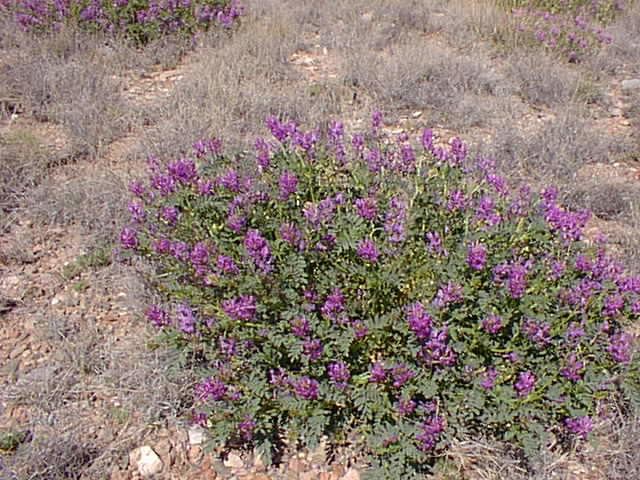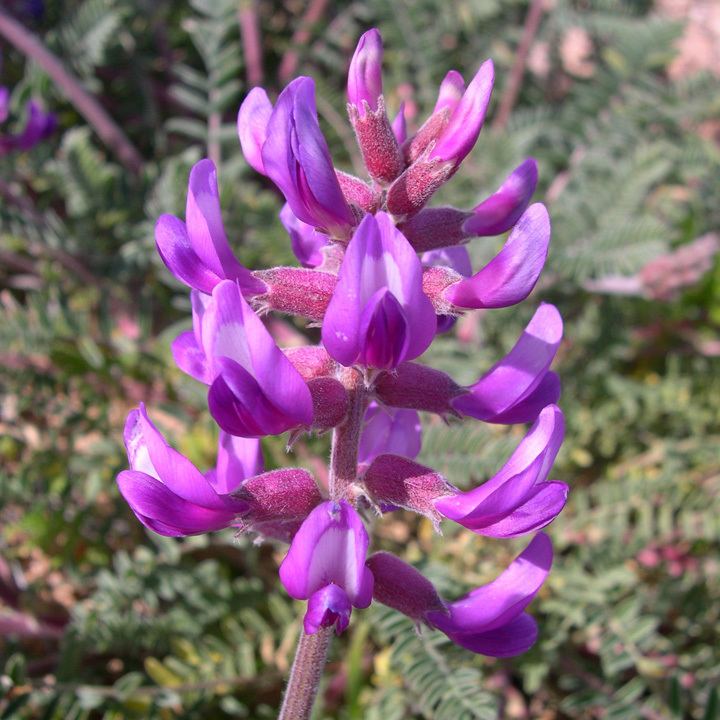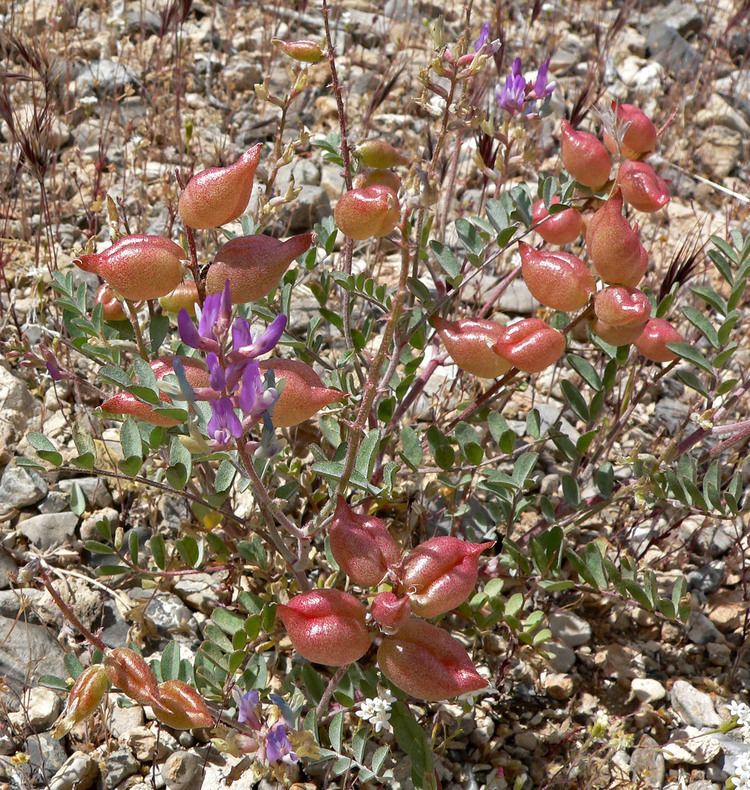Rank Species | Genus Astragalus Higher classification Milkvetch | |
 | ||
Similar Milkvetch, Legumes, Astragalus mollissimus, Oxytropis sericea, Astragalus amphioxys | ||
Astragalus lentiginosus is a species of legume known by the common names spotted locoweed and freckled milkvetch. It is native to western North America, where it grows in many habitat types. There are a great number of wild varieties of this species, and they vary in appearance. The flower and the fruit of a given individual are generally needed to identify it down to the variety.
Contents

Distribution

As a species, Astragalus lentiginosus is distributed throughout the Great Basin of North America, west from the Rocky Mountains to the California Coast Ranges, south to Mexico, and north to British Columbia. The varieties are largely limited to marginal habitats such as disturbed sites in the arid regions of the continent. The group also contains a number of edaphic specialists which occur at desert seeps, which frequently exhibit high levels of calcium carbonate.
Description

Astragalus lentiginosus is a perennial or occasionally annual herb with leaves up to 15 centimetres (5.9 inches) long divided into many pairs of small leaflets. The plant is prostrate to erect in form and quite woolly to nearly hairless. The inflorescence holds up to 50 pea-like flowers which may be purplish or whitish or a mix of both. A unifying character among most of the varieties is an inflated, beaked legume pod with a groove along the side. The pod dries to a papery texture and dehisces starting at the beak to release the seeds. The epithet lentiginosus refers to the red mottling commonly found on the pods which resemble freckles.
Taxonomy

Many of what we currently know as varieties of Astragalus lentiginosus were originally described as individual species. Botanist Marcus E. Jones was the first to recognize the similarities among these taxa and arranged them as varieties of one species. Per Axel Rydberg employed a very different species concept stating that he did not believe in infrataxa This resulted in his raising Jones's varieties to species in the genera Cystium and Tium. A notable novelty of Rydberg's treatment is the concept of sections which have been maintained in the keys of subsequent treatments, even if this was not explicitly stated.

Subsequent treatments include Barneby, Isely, and Welsh. Each of these treatments are slightly different, containing between 36 and 42 taxa. Recent molecular work seems to suggest a genetic component to the varieties.
Varieties
Currently the following 40 taxa are recognized:
Conservation
Two rare varieties endemic to California are federally listed under the Endangered Species Act; var. coachellae is endangered and var. piscinensis is threatened.
Cultivation
Astragalus lentiginosus is currently not cultivated commercially. Propagation from seed requires scarification of the seed coat in order for the embryo to absorb water.
Uses
The Zuni people eat the pods of the diphysus variety fresh, boiled, or salted. They are also dried and stored for winter use.
